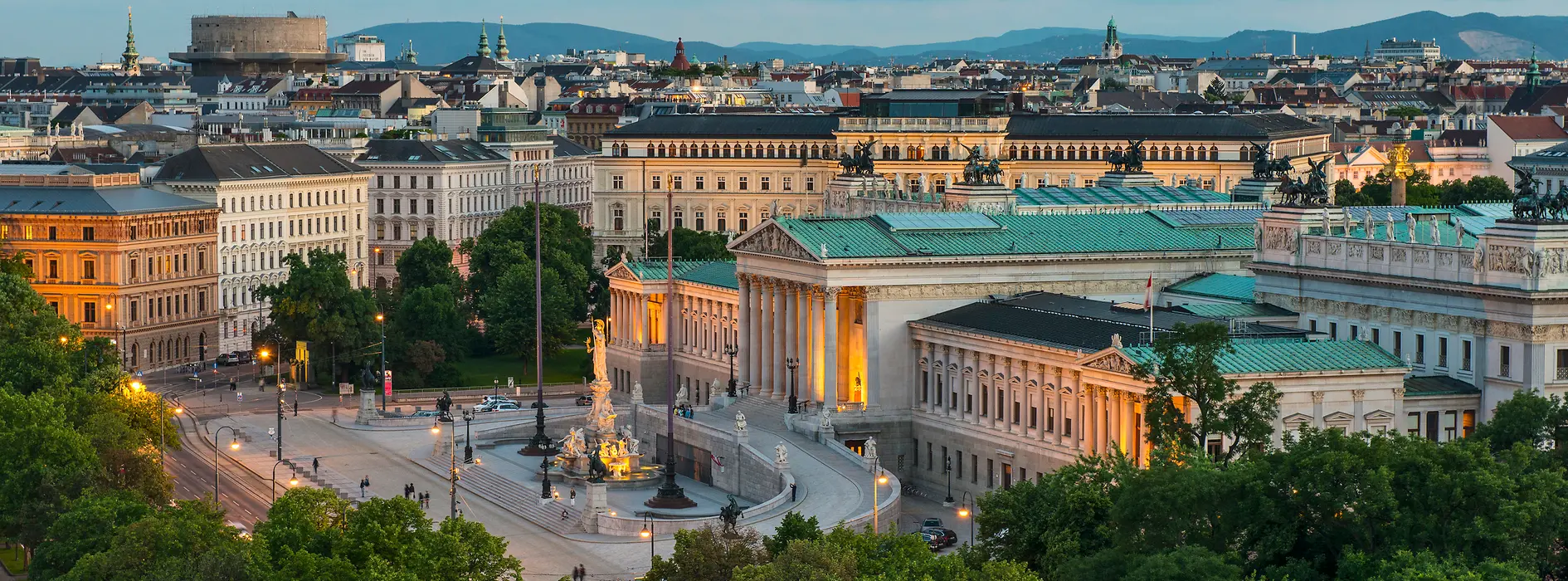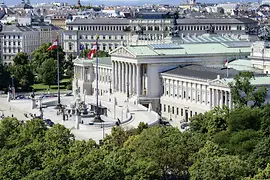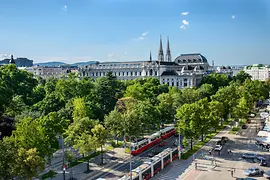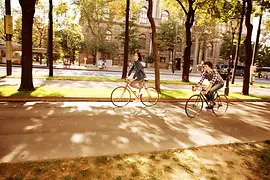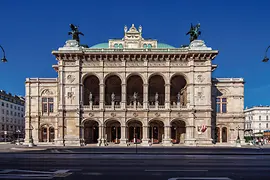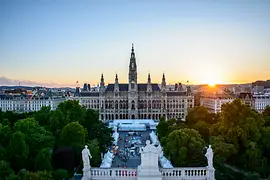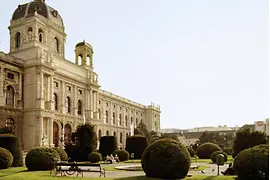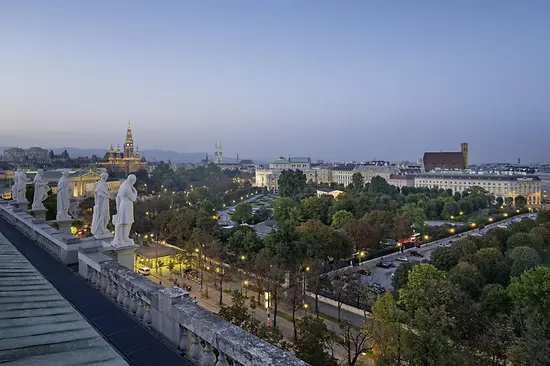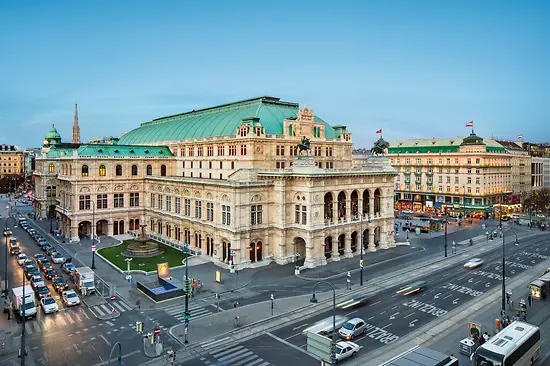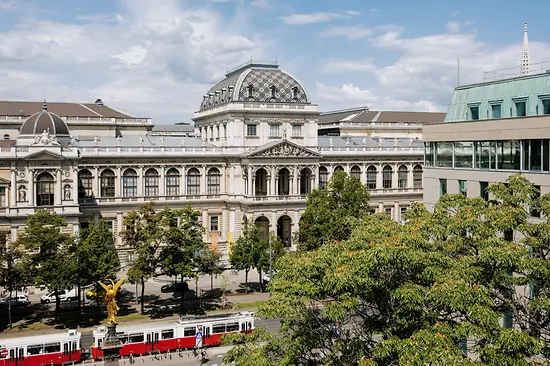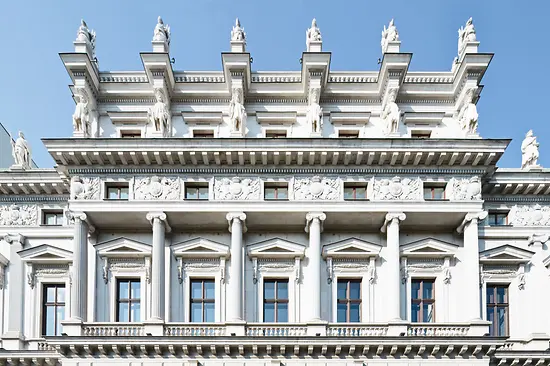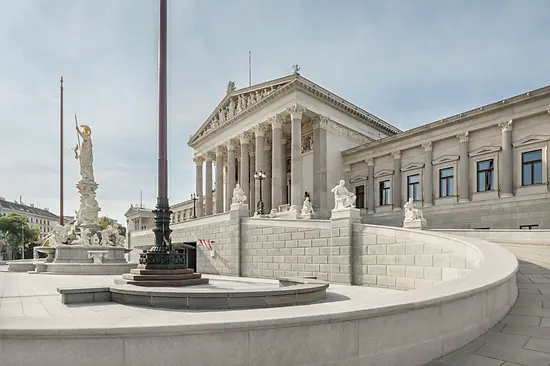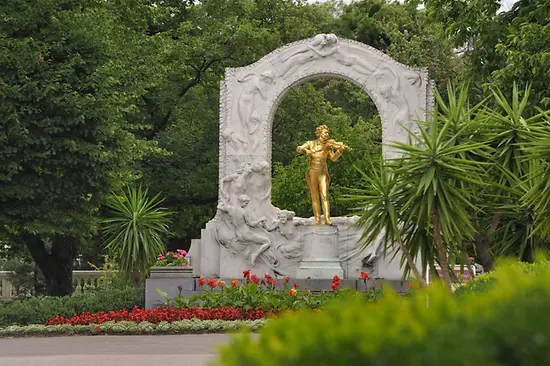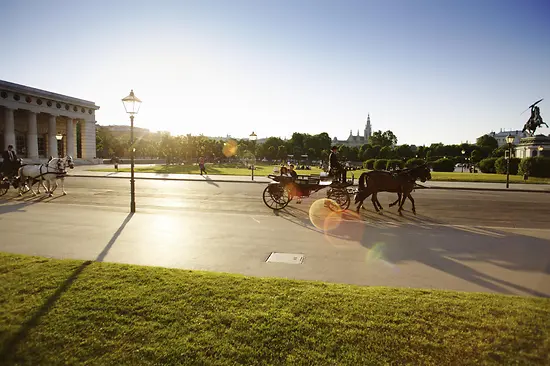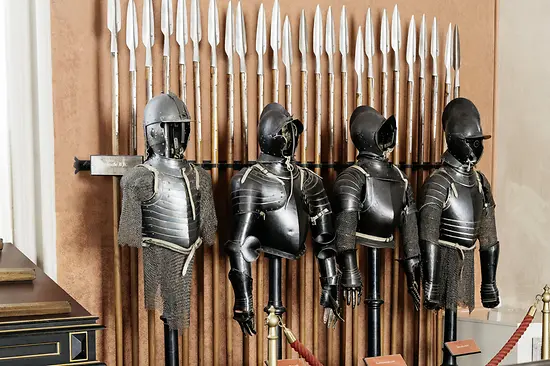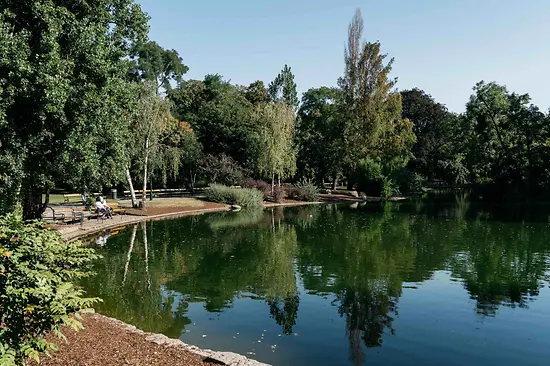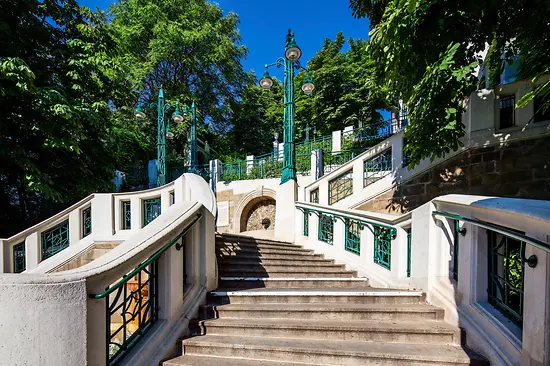Vienna's Ringstrasse
"It is my will..." - with these words, Emperor Franz Joseph ordered the building of the Ringstrasse in 1857. Nobles and rich citizens hurried to build pompous palaces along this magnificent boulevard. Many of these former private homes can still be admired today (mostly, however, only from the outside). The style in which the buildings were built went down in history as the Ringstrasse style (a type of Historicism). It is marked by a pluralism of styles: numerous architectural forms of previous epochs were imitated.
The most noteworthy buildings are not the palaces, but rather the large buildings such as the State Opera (built in the style of the Neo-Renaissance), the Parliament, City Hall (Flemish Gothic), the Burgtheater (New Baroque), the university (Neo-Renaissance), the Museum for Applied Art, the Vienna Stock Exchange, and the Votive Church (New Gothic), which were all constructed in the second half of the 19th century. Especially worth seeing are also the Museum of Fine Arts and the Natural History Museum, both of which were built in the Neo-Renaissance style. They not only hold awesome art and natural treasures, but are also architectural masterpieces.
Master builders such as Theophil von Hansen, Karl Freiherr von Hasenauer, Gottfried Semper, Heinrich von Ferstel, and Friedrich von Schmidt shaped the image of the Ringstrasse. At the end of the 19th century, following the time of the Ringstrasse architecture, came Viennese Art Nouveau, which turned away from the ostentatious pomp and splendor.
